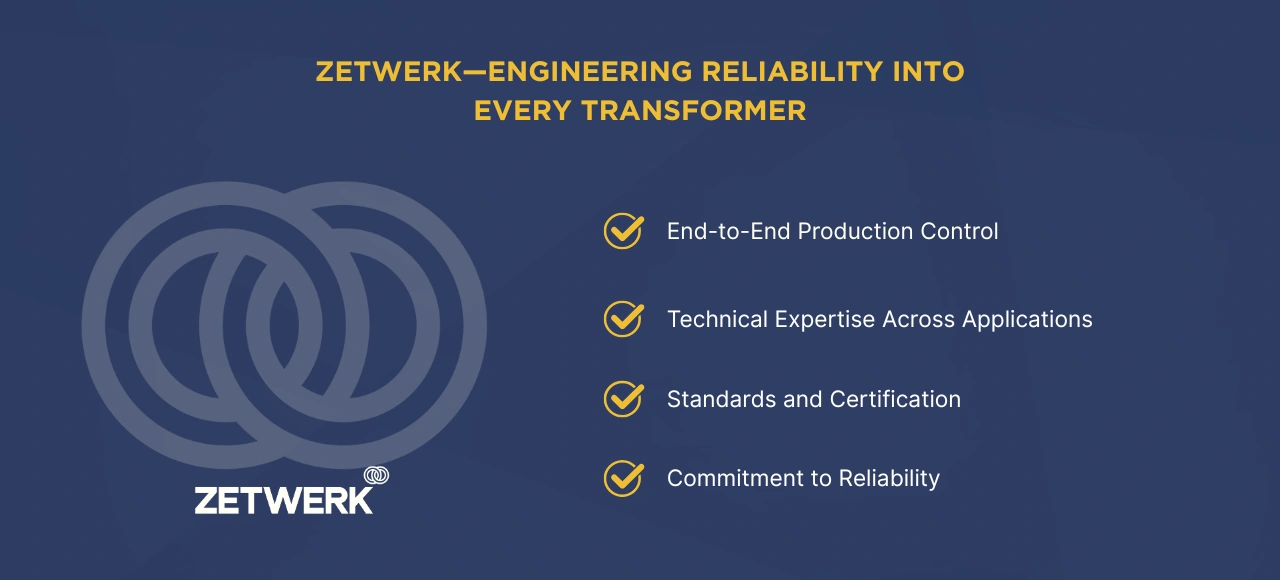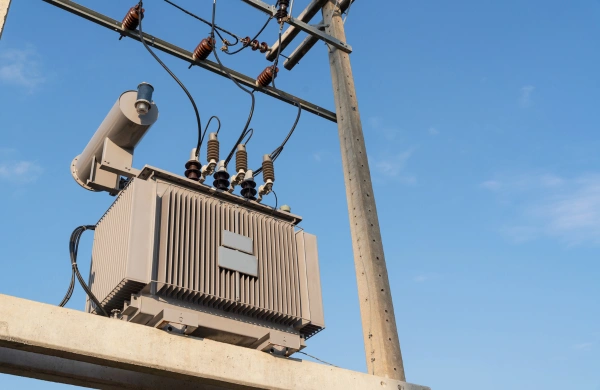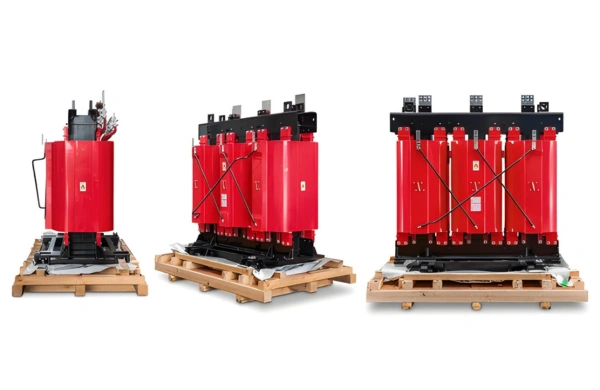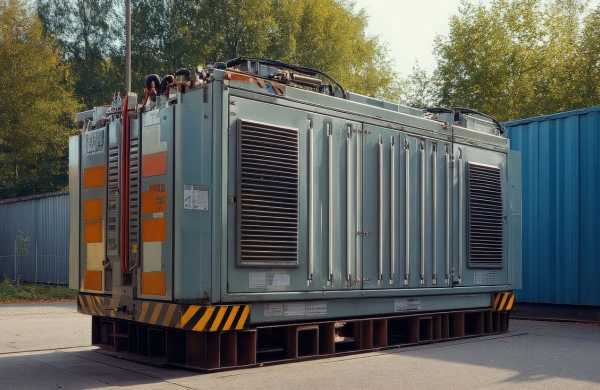The global demand for electricity continues to rise, driven by industrial expansion, renewable integration, and digital infrastructure. At the heart of this power ecosystem lies a quiet yet indispensable technology—the transformer. It enables efficient energy transfer, voltage regulation, and reliable distribution from generation to consumption.
Behind every dependable power system stands a transformer manufacturer committed to innovation, precision, and quality. Over the last decade, advances in materials, automation, and digital monitoring have reshaped the landscape of transformer manufacturing, setting new standards for efficiency and performance.
Know About Powering Progress: The Innovation Behind Modern Transformer Manufacturing
The Evolution of Transformer Manufacturing
From Conventional Design to Intelligent Systems
Earlier transformers were purely electromechanical devices—engineered to perform but limited in adaptability. Modern transformer manufacturing integrates digital intelligence, predictive monitoring, and advanced materials that minimize losses and enhance durability.
These innovations have made transformers smarter, safer, and more efficient, aligning with evolving industrial and utility requirements.
The Rise of Specialized Manufacturers
Today’s power and distribution transformer manufacturers focus on customization—designing equipment tailored for industrial plants, substations, and renewable installations. Each transformer is engineered not just for electrical specifications but also for long-term reliability, safety, and service efficiency.
Core Innovations Driving Modern Manufacturing


1. Advanced Core Materials for Energy Efficiency
The transformer’s core determines its efficiency and energy losses. Modern manufacturers now use:
- Amorphous metal alloys to reduce no-load losses by up to 70%.
- High-grade silicon steel laminations for improved magnetic performance.
- Laser-cut and step-lap joints to minimize flux leakage and noise.
These advancements help industries reduce operational energy costs while meeting increasingly stringent efficiency standards.
2. Precision Coil Winding and Assembly
Automation and robotics have redefined coil winding—once a manual process. Automated winding machines ensure consistent tension, alignment, and insulation quality, improving thermal performance and reliability.
Manufacturers now employ computer-aided winding designs, minimizing hot spots and improving dielectric strength—critical for both power and distribution transformers.
3. Digital Quality Assurance and Testing
Modern production lines use real-time quality tracking and automated testing systems. Type, routine, and special tests are digitally recorded to ensure full traceability.
High-voltage testing, impulse withstand, and temperature-rise tests validate each transformer’s reliability before dispatch. This traceable quality framework builds buyer confidence, especially for large infrastructure projects handled by EPCs and utilities.
4. Smart Transformers with Embedded Monitoring
Innovation is shifting transformers from passive devices to active digital assets. Smart transformers equipped with:
- Temperature and vibration sensors
- Dissolved gas analysis (DGA) monitors
- Load and voltage analytics
These features enable predictive maintenance and improve system resilience. A manufacturer integrating such technology delivers not just hardware but operational intelligence.
The Role of Automation and Digital Manufacturing
Industry 4.0 in Transformer Production
The application of Industry 4.0 principles—automation, robotics, and data connectivity—has optimized productivity across manufacturing facilities.
Digital twin technology, for example, allows engineers to simulate transformer performance virtually before physical production, ensuring each design meets performance targets.
Enhanced Traceability and Quality Control
Every major transformer manufacturer now employs Manufacturing Execution Systems (MES) to digitally link design, production, and inspection records. This ensures end-to-end traceability—from raw material to final assembly.
Such systems are crucial for global buyers seeking suppliers with transparent, ISO-certified quality processes.
Sustainability in Transformer Manufacturing
Eco-Friendly Materials and Fluids
Environmental considerations are shaping the next generation of transformer design. Manufacturers are increasingly adopting:
- Natural ester fluids as alternatives to mineral oil—biodegradable and fire-resistant.
- Recyclable core and tank materials to minimize lifecycle impact.
- Energy-efficient production processes to reduce carbon footprint.
Lifecycle Efficiency and Reduced Losses
Transformers designed for higher efficiency not only lower electricity costs but also reduce the overall energy required for transmission—directly supporting sustainability and energy-security goals.
Global Competence: India’s Growing Strength in Transformer Manufacturing
India has rapidly evolved into a global hub for engineering and fabrication, combining advanced manufacturing with cost efficiency. Leading transformer manufacturers in India are now supplying world markets with type-tested, export-ready power and distribution transformers.
Key strengths include:
- Comprehensive manufacturing facilities: Core cutting, winding, tank fabrication, and testing—all under one roof.
- Compliance with global standards: Adherence to IEC, ANSI/IEEE, and ISO frameworks.
- Skilled engineering workforce: Design customization aligned with EPC and utility requirements.
For international buyers seeking a reliable transformer manufacturer, India’s ecosystem provides the engineering depth, scalability, and value essential for modern energy projects.
Collaboration Across the Value Chain
Integrating Design, Manufacturing, and Logistics
Innovation doesn’t stop at the factory floor. Leading manufacturers integrate design collaboration, global sourcing, and logistics planning to ensure on-time, damage-free delivery.
EPCs and industrial buyers benefit from early supplier involvement—where engineers and manufacturers co-develop optimized solutions that align with technical and project constraints.
Service and Lifecycle Support
Modern transformer supply extends beyond manufacturing. Support services include:
- Installation supervision and commissioning assistance
- Condition assessment and testing
- Spare parts management
- Refurbishment and life extension programs
A transformer manufacturer offering these capabilities becomes a long-term reliability partner, not merely a supplier.
Zetwerk—Engineering Reliability into Every Transformer


Zetwerk stands at the forefront of transformer manufacturing, combining global engineering expertise with precision-controlled production.
End-to-End Production Control
Zetwerk manages every stage in-house—from design and core fabrication to winding, tank assembly, and final testing—ensuring full quality control and repeatability.
Technical Expertise Across Applications
Zetwerk designs and builds power and distribution transformers across multiple voltage classes, tailored for utilities, industrial plants, and renewable energy installations.
Standards and Certification
Each unit is built to ANSI, IEC, and ISO standards and tested and documented to meet global compliance requirements.
Commitment to Reliability
Zetwerk’s engineering team focuses on durability, efficiency, and project accountability—delivering equipment that performs reliably in service for decades.
Applications Across Industrial and Utility Segments
Transformers manufactured today serve diverse applications across sectors:
- Industrial facilities: Reliable voltage regulation for manufacturing and process equipment.
- Utilities: High-voltage substations ensuring efficient grid transmission.
- Renewable projects: Step-up and step-down transformers connecting solar and wind power to the grid.
- Infrastructure developments: Urban and rural electrification networks.
Through design optimization and quality manufacturing, these transformers deliver dependable performance across environments and duty cycles.
Global Presence and Buyer Accessibility
For decision-makers searching for transformer manufacturers near me, proximity is no longer the only advantage. Reliable communication, design transparency, and project execution matter more.
Manufacturers with global logistics networks and local support can serve EPCs and industries efficiently, whether based in India, the U.S., or international project sites.
This combination of local support and global expertise defines the new benchmark in transformer manufacturing partnerships.
Conclusion
Innovation in transformer manufacturing continues to drive progress, enabling industries to operate more efficiently, reliably, and sustainably. Through advanced engineering, smart monitoring, and precision production, modern transformers are built for long-term performance and energy security.
Zetwerk leads this evolution with end-to-end manufacturing control, strict quality standards, and proven delivery reliability. Whether you need a power, distribution, or custom transformer, Zetwerk transformers are engineered for durability and precision.




Partner with Zetwerk today—and power your next project with transformers designed to perform, built to last, and manufactured with confidence.
FAQs
A. Automation, digital testing, and improved core materials reduce losses, enhance consistency, and improve production speed and reliability.
A. Smart transformers enable remote monitoring, predictive maintenance, and real-time data analytics, improving reliability and safety.
A. Power transformers handle high voltage levels for transmission, while distribution transformers step down voltages for industrial and end-use applications.
A. By adopting biodegradable insulating fluids, energy-efficient designs, and recyclable materials to reduce emissions and waste.
A. End-to-end control, adherence to international standards, customization capabilities, and a proven record of reliability and on-time delivery.







